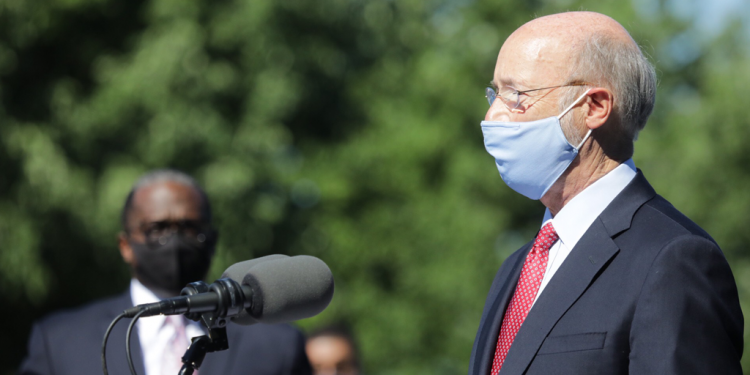HARRISBURG – Gov. Tom Wolf is dedicating $15 million for schools to secure broadband, mobile hot spots and other platforms that increase equitable access to remote learning.
“The COVID-19 pandemic has forced our schools to rethink and rework how to provide instruction to students who are learning completely at home or in a hybrid model,” said Wolf.
“As schools reopen this fall, students need Internet connectivity, computers and other technology, and access to remote-learning platforms. This funding will help our students as we enter the new school year.”
The Coronavirus Aid, Relief and Economic Security (CARES) Act authorizes governors to determine the educational use of Governor’s Emergency Education Relief (GEER) Funds.
The initiative will employ a multi-pronged approach that includes the use of state library networks and other partnerships, including the Pennsylvania Technical Training and Assistance Network (PaTTAN).
Specifically, the funding will be used to:
- Enable public libraries to coordinate work with the Internet Disaster Recovery Center to expand Internet connectivity in targeted county-wide geographic service areas identified as most in need. Expand the inventory of Wi-Fi hot spots and lendable technology through public libraries and addressing the technology deficit among libraries (estimated $1.4 million).
- Strengthen and expand the existing 24/7 online homework help through the POWER Library Chat with a Librarian service and additional electronic resources (estimated $100,000).
- Create and deploy Open Educational Resources (OER) for students and educators (estimated $500,000). OERs give students access to a wider range of instructional materials, including textbooks, videos and research, free of charge.
- Establish a statewide datacastingOpens In A New Window initiative with Pennsylvania PBS to connect students to learning content who don’t have access to the Internet (estimated $8 million). Datacasting uses over-the-air TV signals to deliver educational content that can be used on computers without having to access the Internet. Using a datacasting antenna, students can download lesson plans, videos, and worksheets from their schools.
- Distribute devices to be used in conjunction with datacasting technology for households without a connection to the Internet (e.g. datacasting antenna, laptops), and provide the technical supports and professional development to connect students to learning (estimated $3 million).
- Distribute accessible/assistive technology, including but not limited to software, tablets, tablet mounts, screens, smart pens, hotspots, devices, for K-12 students with exceptionalities in collaboration with the PaTTAN system (estimated $2 million).
“In response to the pandemic, PDE and others have created new partnerships and strengthened existing ones to ensure Pennsylvania’s students continue to be served, whether that is academically, nutritionally, or socially and emotionally,” said Secretary of Education Pedro A. Rivera.
“This new initiative is another way in which communities are working together to benefit our students.”
This initiative builds on the Department of Education’s efforts to support schools’ efforts to implement continuity of education plans during the 2019-20 academic year when schools closed unexpectantly as a result of COVID-19, which included Equity Grants and a partnership with Pennsylvania’s PBS stations to air standards-aligned programming across the state.
To date, the Wolf Administration has awarded $102.5 million in GEER funding to help keep students and educators safe and meet the unique challenges of COVID-19.
In addition to the $15 million for connectivity, the Wolf Administration has directed $17 million for schools designated for Additional Targeted Support and Improvement under the federal Every Student Succeeds Act; $15 million for special education; $28 million to postsecondary institutions and adult basic education providers; $14 million to K-12 schools to support equity in continuity of education; $10.5 million to Career and Technical Education Centers; and $3 million for Preschool Early Intervention Programs.




